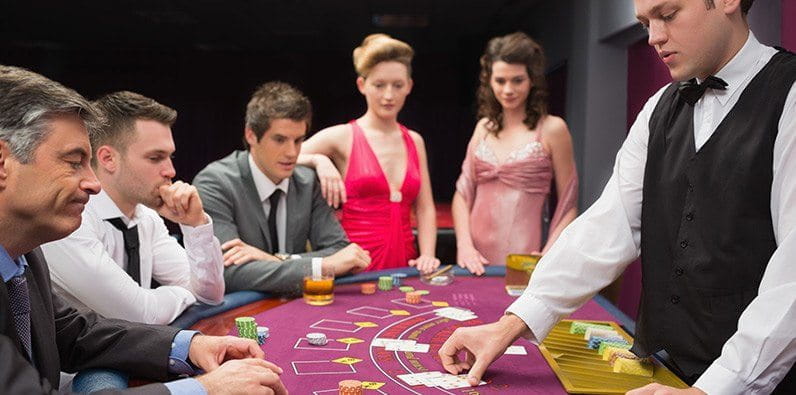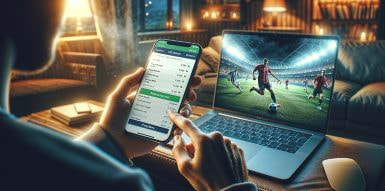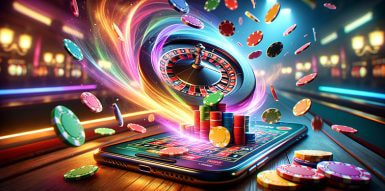What Are Dealer Tells in Blackjack?
In gambling, a tell is any non-verbal cue that gives actionable hints about the value of hole cards. Obviously, this is typical for games where the rules require one or more cards to be dealt face down. The value of these cards is known only to the hand holder, or to the dealer, and is revealed to everyone else at a later stage of the game. This creates uncertainty, which in the ideal situation, should provoke the players to act upon probability estimates until all hand values are shown. However, people are susceptible to the influence of doubt and they try to dispel that doubt in any means available. Simply put every player would dwell on the question “What does my opponent that I don’t?”. This is where tells are put into use.
How Accurate is Body Language Reading?
Skilled people can presumably read us like open books, detecting discrepancies between what we say and how we behave. As you probably can guess, such skills could be of high value in games like poker, where many decisions are being made based on facts that others know, but you don’t. Display of weakness or confidence by others may influence our decision about staying in the game. Being able to spot and interpret non-verbal cues can help you in recognising another player’s genuine emotional response to a strong or a weak hand. It could also help you detect bluffs.
Recent studies, however, suggest that most people are not so good at exposing liars and that lying is not so obviously manifested. Through experimental research, psychologists are denouncing know and trusted body language cues as less reliable. Let’s take eye contact for example. A common belief is that liars avoid looking others in the eyes. However, a survey of courtroom footage has concluded that people who lie tend to gaze at questioners. Another research reveals people who knowingly give untrue statements are less likely to display the cues commonly associated with lying. The reason is that liars know they are being observed and that other people can detect discrepancies between speech and non-verbal cues. Therefore, when lying, they try to align themselves with the expectations of others about normal behaviour.
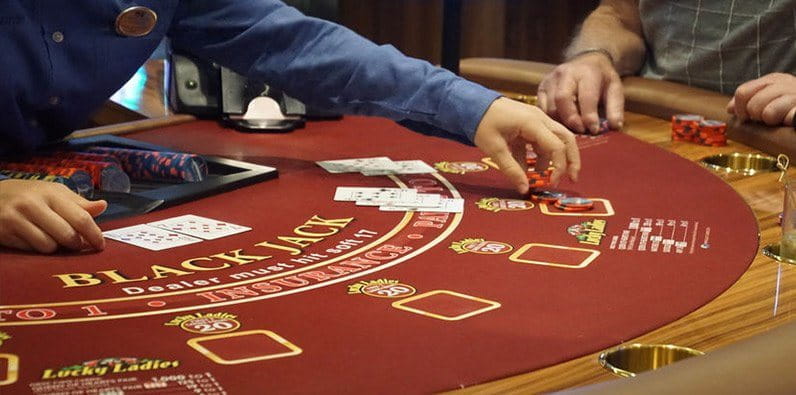
Context is another variable that plays a huge role. Many unconscious gestures and postures have varying meaning in different situations. A classic example is the crossed hands gesture. Depending on the circumstances it may be considered a defensive position, or it could mean that the person is cold. Simply put, this is not an exact science, and strict rules are a rarity. There are vast grey areas, with plenty of room for misinterpretation. Perhaps the best way to detect behaviour out of the ordinary is to know someone well. This is the reason why players are frequently advised to observe their opponents carefully and watch for inconsistencies.
Why Is Blackjack Different?
As you know blackjack is played against the dealer, so there’s only one hand you need to second guess. Also, there’s only one face-down card, which is dealt to the dealer. The initial player hands are visible, and so is the other dealer card. This doesn’t make your life much easier though. The dealer can peek at his hole card only when the hand could potentially hit a blackjack. In other words, the face-up card must be an ace or have a value of 10. In all other situations, the dealer will not peek, meaning the value of the hole card would remain unknown to everyone on the table until it’s dealer’s turn to play. The most important conclusion from these game rules is that in most cases the dealer doesn’t know the hole card value and therefore cannot give any cues about it.
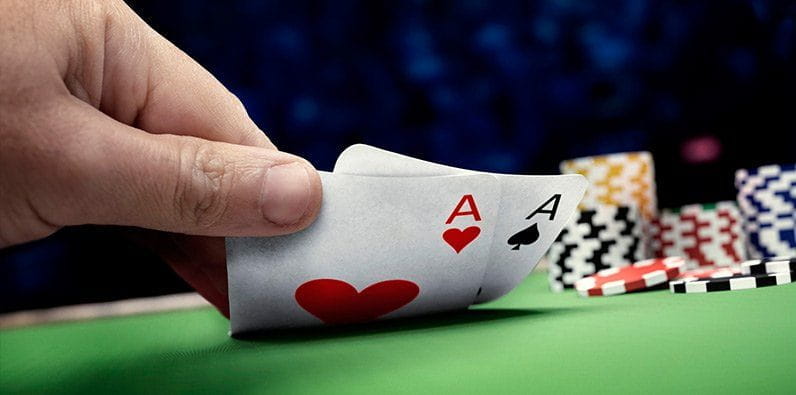
Another important thing to remember is that blackjack dealers don’t risk their own money. Sure enough, they’d better be good at their job, otherwise, they risk losing it. Nevertheless, they are less sensitive to losing hands compared to poker players for example. Emotions play a lesser role which makes them easier to hide. In addition, most of the time blackjack dealers display assistive gestures that help them conduct the game. Cards are dealt in a very consistent way, with identical repetitive movements, which more experienced professionals do smoothly and without significant effort. The abundance of automated gestures can make it harder to distinguish other body language cues. Your brain may get overloaded with too much distracting information if you follow the dealer all the time. You must learn to pay attention to the right cues, which isn’t easy, especially when you have to mind the basic strategy at the same time. And last, in blackjack only players place bets. Dealers cannot bluff and intimidate you with high stake bets because they don’t bet at all. To summarise, most of the time dealers have nothing to hide and trying to read their mind is pointless.
Which Are the Common Dealer Tells in Blackjack?
We mentioned already that peeking is allowed only when the face-up card is ace or ten. For that reason, we focus only on these situations here. Perhaps the most relied upon technique is to observe how long the dealer looks at the face-down card. Another technique is to observe the distance between the dealer hand and the shoe. Check the following paragraphs for more details about each of these tells.
Hole Card Peeking Time
When peeking, dealers fold the hole card so players can’t see it. Therefore, they must read the value at an angle which is not very convenient. In these circumstances some cards are more difficult to read than others and perceiving the card value requires more time. Here’s a quick summary of the difficulty of card peeking:
- Tens are easy to distinguish because this is the only two-figure number written on cards in a standard deck.
- Face cards are easy to distinguish because they are colourfully illustrated. Also, their value in blackjack is the same, meaning that dealers don’t even need to differentiate Jacks, Queens and Kings. All they need to know is the card counts as 10.
- Numbers like 2 and 5, and 3 and 8, can look alike when seen from an angle. The same is valid for aces and 4s. Therefore, in such situations, dealers need more time to make sure they read the card correctly.
Differences in timing due to varying difficulty make sense, but you must keep in mind that dealers undergo training before working with patrons on the casino floor. If you think that some are more experienced than others, you are right. That doesn’t make them an easy prey though. Casinos know their weak points and do their best to reinforce them. You’d be surprised how many simple, yet effective methods they can use to bulletproof the dealers. Just think for a minute which makes more sense if you want to spend an equal amount of time when peeking at hole cards. Would you aim at being faster with difficult cards, or would you just take an extra second or easy cards?
Distance of Dealer’s Hand From the Shoe
Some believe that dealers position their hands further away from the shoe when they have low cards and expect to hit more. However, our observations show this should be dismissed. Dealers consistently place their initially drawn cards right in front of them. Even if extra room is needed, the cards can easily be moved to the side while the hole card is being turned up, right before the dealer begins to hit. We all know it’s already too late to try and get an advantage at this point. Also, the shoe is not so close to the dealer to require complicated manoeuvres for saving space. If you observe, you’ll see that dealers stretch their hands relatively far to reach it. That said, the space on the table is usually enough to allow a few additional hits by the dealer.
Final Thoughts
Our observations of blackjack dealing, as well as the game rules, suggest that blackjack is not a game where dealer tells could contribute substantially to long term success. Add the casino operating procedures, and your chances to read the dealer decrease even more. Dealers change frequently enough to avoid exhaustion and make sure they are always fresh and sharp. Also, this doesn’t allow players to watch them for too long and learn their weaknesses if any. The situations in which dealers may display cues are limited to hands with a ten value face up card. Simply put, consistently applying basic strategy is more reliable compared to hacking the dealer. The strategy applies to all situations, while dealer tells cannot be applied all the time. Also, it is highly advisable to use tells in addition to strategy, and not as a substitute for it.
